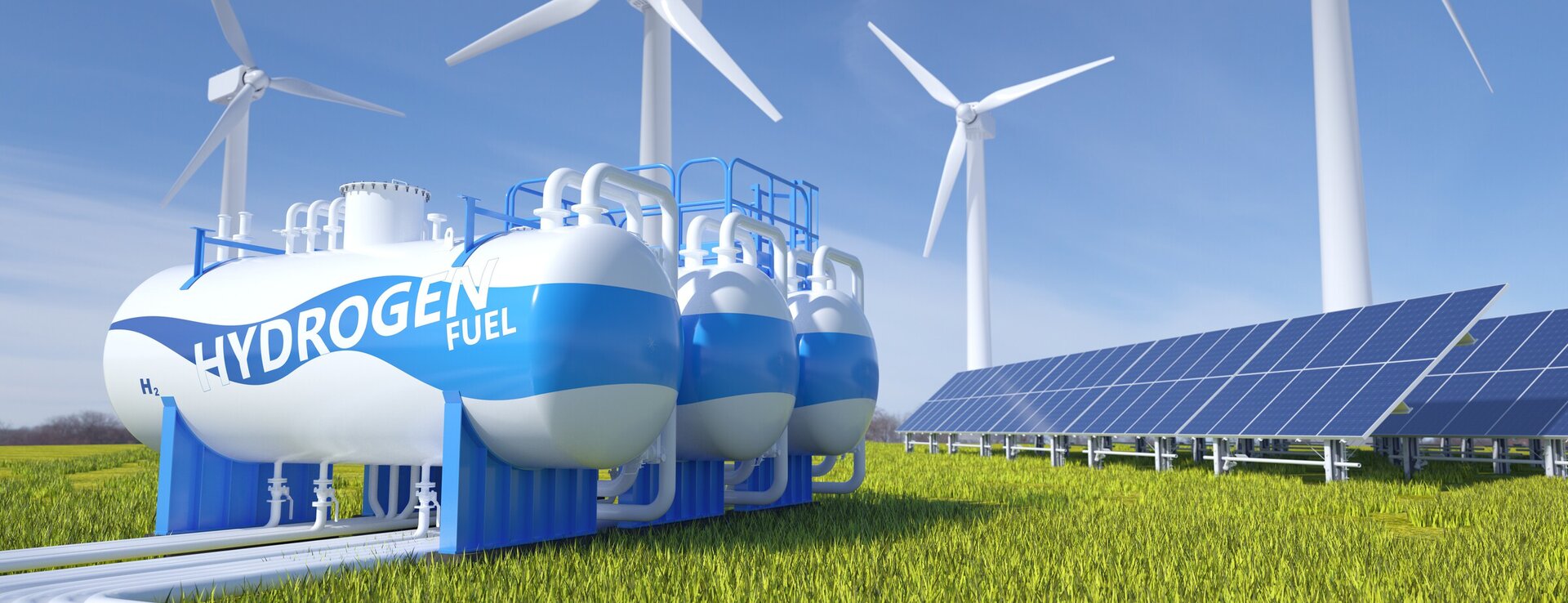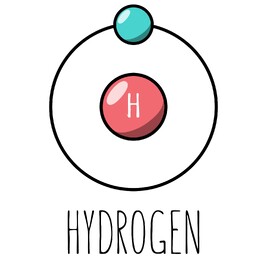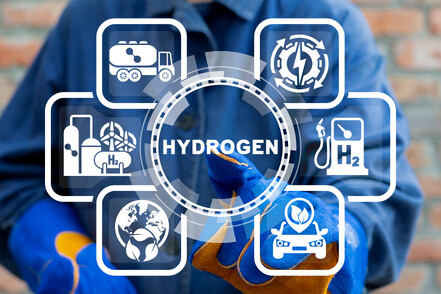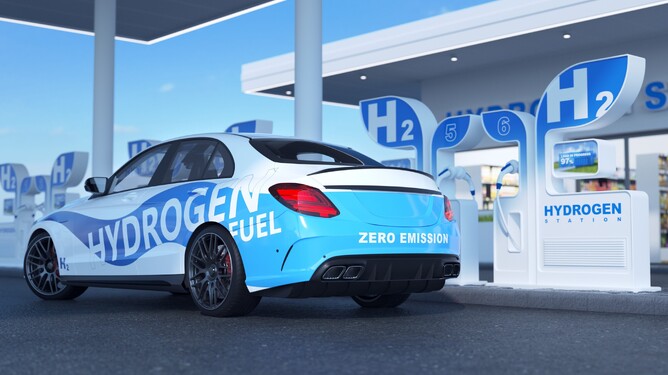The search for a clean, renewable energy source has been ongoing for decades. With the need to reduce emissions and our reliance on fossil fuels, hydrogen fuel is emerging as one of the most promising solutions. Hydrogen is abundant in nature, easy to transport and store, and produces zero emissions when used as a fuel source.
In this article, we will explore how hydrogen fuel can be accessed efficiently and safely, what advantages it offers over other forms of energy production, and some of the challenges that must still be addressed before it can become widely adopted.
Overview of Hydrogen
Hydrogen is the most abundant element in the universe, making up approximately 75 percent of all matter. As an atom, it contains one proton and one electron, with a nucleus that is only slightly larger than the electron it orbits. This allows hydrogen to easily form bonds with other atoms and molecules, making it an ideal fuel source.
Hydrogen fuel has been used for decades as a clean and efficient source of energy. When burned in air, hydrogen produces only water vapor and heat as byproducts. Unlike fossil fuels such as natural gas (methane), coal, and oil, hydrogen does not produce any harmful emissions or toxic pollutants when used in combustion engines or turbines.
The main advantage of using hydrogen as a fuel source is its abundance – it can be found in almost any environment on earth and can be produced from water using renewable energy sources such as solar and wind power. Additionally, due to its small size and lightweight, hydrogen can be transported easily and stored safely without losing much energy in the process.
Benefits of Using Hydrogen as a Fuel Source
Environmental Friendliness
The most obvious benefit of using hydrogen as a fuel source is its environmental friendliness. As mentioned above, burning hydrogen produces water vapor and heat, which are both non-toxic and harmless to the environment. This means that using hydrogen as a fuel eliminates the need to emit harmful pollutants into the atmosphere, making it an ideal option for those looking for clean energy solutions.
Storer of energy
It can also be used as a storer of energy, much like a battery. As the world moves toward renewable energy sources, we become more reliant on them being available when we need them. But the reality is that the sun doesn't always shine for solar panels, and the wind doesn't always blow wind turbines when we need the energy. So to counteract this, we need to find ways of storing those renewable energy sources while they are available to us, in order to release the energy when we need it.
Thanks to recent advancements in technology, producing and using hydrogen as a fuel has become much more efficient and cost-effective. For instance, electrolysis (the process of splitting water molecules into oxygen and hydrogen) can now be used to extract pure hydrogen from water with greater ease and less cost than ever before. Additionally, new technologies are being developed that allow for the capture and reuse of byproducts like heat and steam generated when producing or burning hydrogen – further reducing costs associated with this clean energy source.
Methods for Accessing and Storing Hydrogen
There are two primary methods for accessing and storing hydrogen fuel: electrolysis and reforming.
Electrolysis
Electrolysis, as mentioned above, is the process of splitting water molecules into oxygen and hydrogen atoms using electricity. This allows for the production of pure hydrogen gas without producing any emissions or pollutants.
Steam methane reforming
Reforming is another method for extracting hydrogen from fossil fuels like natural gas (methane) or coal. This involves a process called steam-methane reforming, which ultimately results in a mixture of carbon monoxide, carbon dioxide, and hydrogen. The resulting mix can then be separated into its components through a variety of techniques such as catalytic conversion or membrane separation.
Storing and transporting Hydrogen
In order to store and transport hydrogen safely, it must be stored in a compressed form at high pressures – typically between 700-800 bar (70,000-80,000 kPa, for comparative purposes, a natural gas system in a house is typically between 3-7 kPa). This can be done via specialized storage tanks made from materials such as aluminum alloys or high-strength steel that are able to withstand high-pressure levels. Alternatively, liquid hydrogen can also be used as a storage medium and transported via tanker trucks equipped with insulated cryogenic tanks capable of withstanding temperatures down to -253°C (-423°F).
Emerging technologies
Finally, there are also emerging technologies that allow for the direct conversion of energy into chemical bonds between molecules such as carbon atoms and free electrons – essentially allowing for the creation of molecular hydrogen at atmospheric pressure levels without the need for compression or cooling. This technology has significant potential when it comes to making clean energy more accessible on an industrial scale.
Challenges to Overcome Before Widespread Adoption of Hydrogen Fuel
Despite the many potential benefits of hydrogen fuel, there are still some challenges that need to be addressed before it can become widely adopted. Cost remains a major barrier, as using electrolysis to extract pure hydrogen from water is much more expensive than other forms of energy production and storage.
Hydrogen infrastructure and transportation
Additionally, creating an effective infrastructure for transporting and storing compressed or liquid hydrogen fuel in large quantities safely and efficiently is also a key consideration. Finally, further research into methods for capturing byproducts such as heat or steam generated during the production process should be conducted in order to reduce costs associated with producing this clean energy source.
Extracting hydrogen
The hydrogen extraction process is another massive challenge for hydrogen. Because hydrogen doesn't exist in its pure form on earth, we need to separate it from other atoms to access it. Most commonly this is from oxygen in water, which has a molecular formula of H2O (two hydrogen atoms, and one oxygen atom), or from carbon in methane, which has a molecular formula of CH4 (one carbon atom, and four hydrogen atoms).
To break the bonds between hydrogen and oxygen in water, we need to use energy. Now there are a number of ways to do this, but the most important thing to consider here is how clean the energy used to break the bonds is. If the energy used to separate hydrogen and oxygen is from non-renewable sources, let's say a power plant fueled by natural gas, then the hydrogen isn't clean.
Although it is clean to burn the hydrogen, its extraction was dirty and therefore the carbon emissions we are looking to reduce are still released into the atmosphere. And when you consider that you lose energy in the process of creating hydrogen, it would be cleaner to use the electricity directly rather than to create hydrogen.
So, to clean up the extraction process, we need to be using renewable energy as the input to the extraction process to truly have clean hydrogen energy.
The Future of Clean Energy with Hydrogen Fuels
The future of clean energy with hydrogen fuels looks very promising. Hydrogen fuels offer sustainability, affordability, and zero emissions, making them an attractive option for the future of energy production. With advances in technology and further investment in research and development, hydrogen fuel could become a mainstream source of power within the next decade.
In the near future, there is potential for hydrogen fuel to be used to power individual households. This could involve the creation of home-based electrolysis systems that use renewable energy sources such as solar or wind power to produce their own hydrogen fuel on-site. This would be much more efficient than depending on a centralized system for hydrogen fuel production. In addition to residential applications, hydrogen fuel could also be used to power larger applications such as electricity grids or transportation networks.
Some experts predict that by 2030, we may see up to 10 million vehicles powered by hydrogen fuel cells on the roads worldwide. The World Economic Forum has also stated that they believe it's possible for 20-30% of global electricity production to come from renewables like wind and solar coupled with hydrogen storage systems by 2050.
Closing Thoughts
Hydrogen fuels offer a promising clean energy solution for the future. With its abundance, ease of storage and transport, as well as zero emissions, hydrogen fuel has the potential to power our homes, cars, and businesses efficiently. By investing in research and development into methods for capturing byproducts such as heat or steam generated during production processes and using renewable energy sources for extraction purposes we can continue to make progress toward widespread adoption of this sustainable source of power. We have the tools available now to begin making strides towards a greener tomorrow powered by hydrogen fuels – all that is left is tapping into their full potential!
Given its many advantages – abundant availability, ease of transport and storage, and no greenhouse gas emissions – there is no doubt that hydrogen fuels have a bright future ahead of them when it comes to clean energy production. With continued investment in research and development, these technologies can continue to evolve and create a more sustainable world for generations to come.








